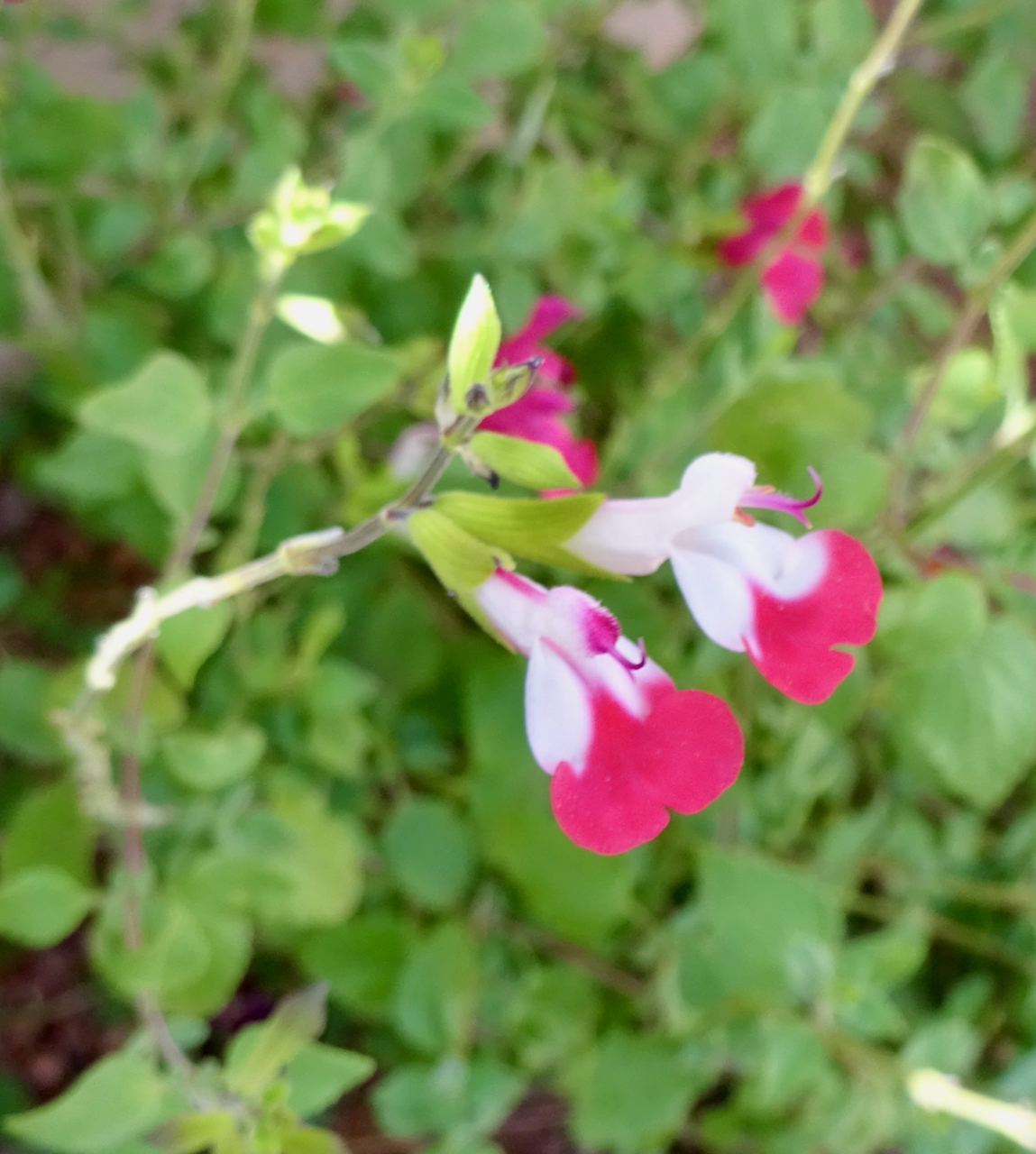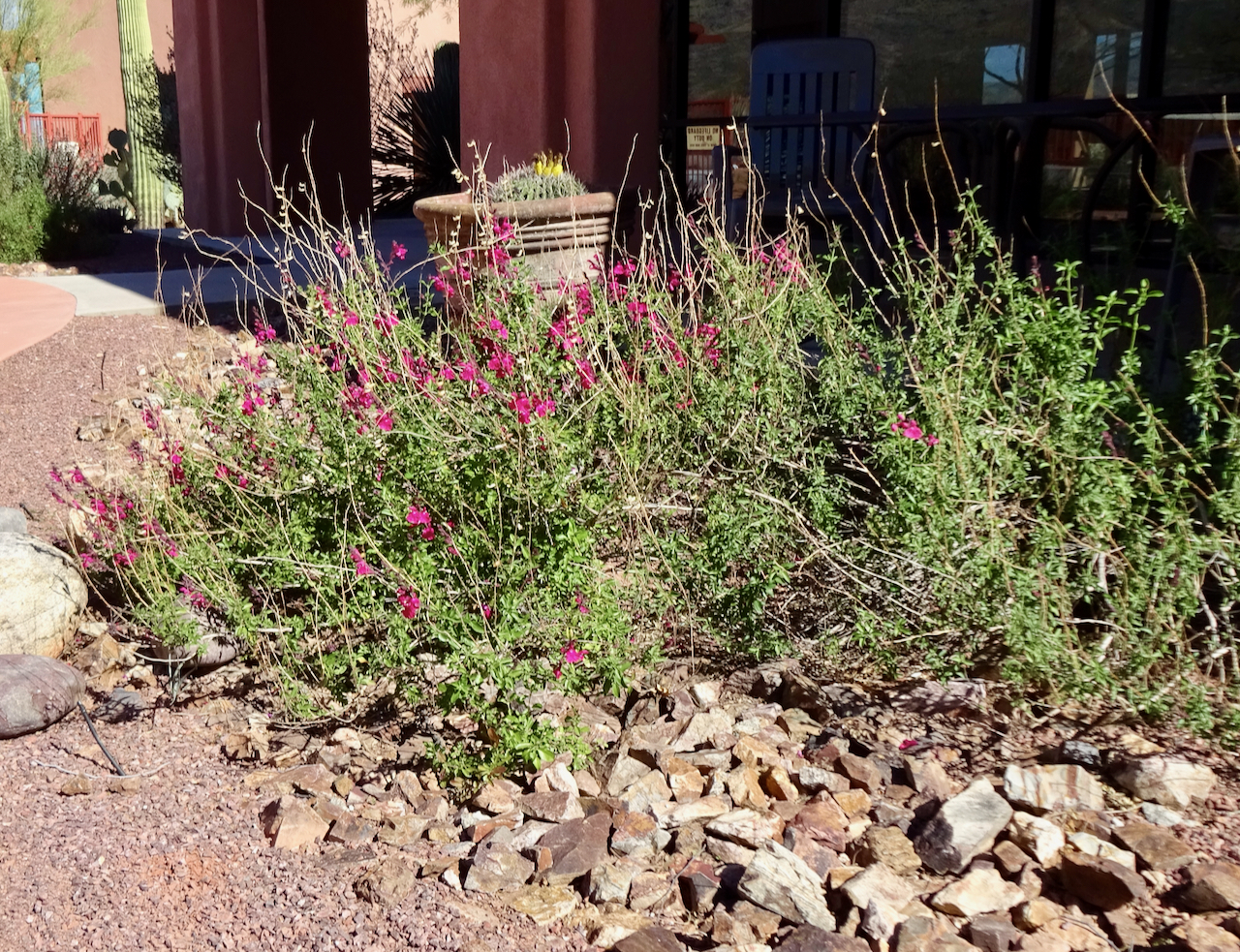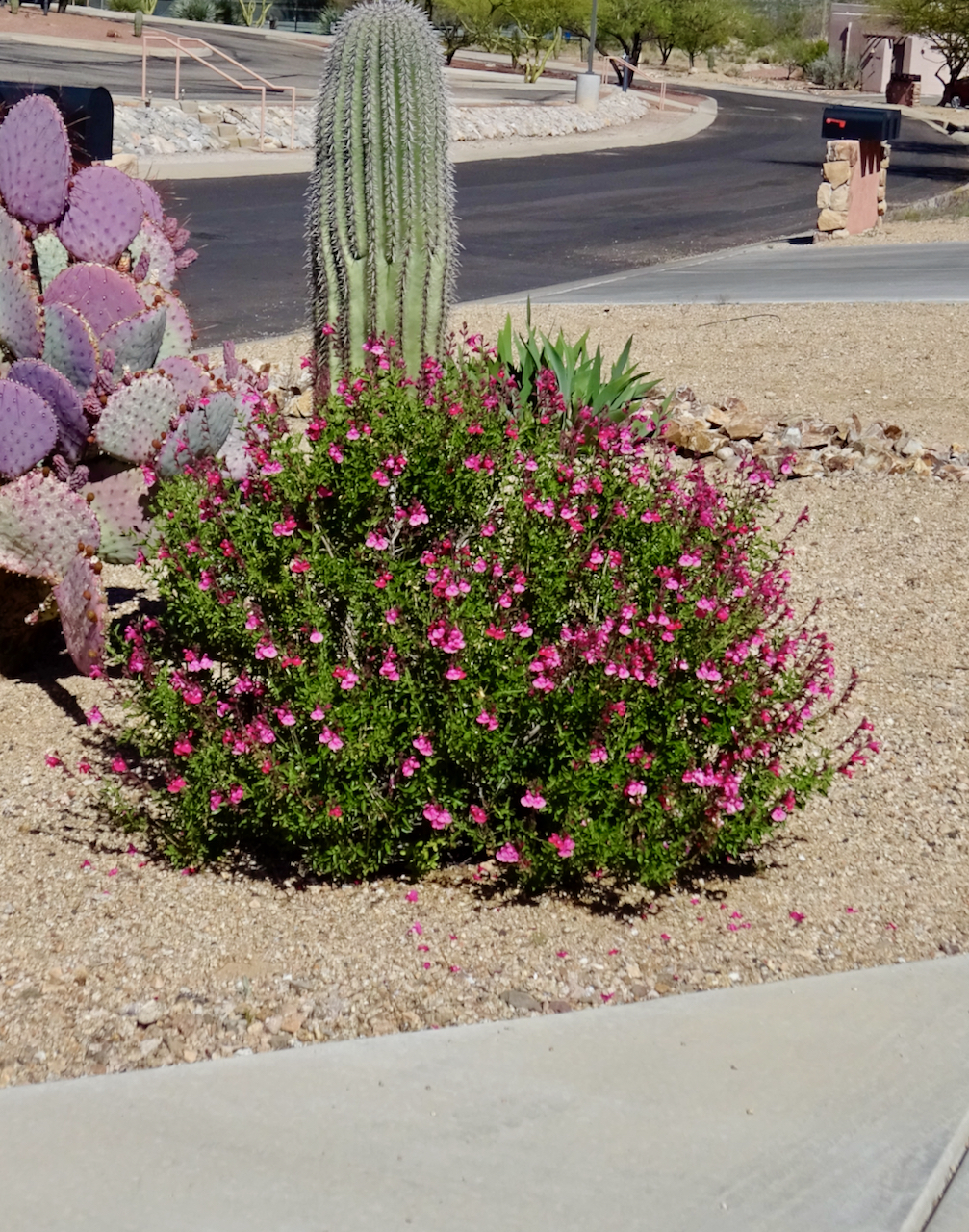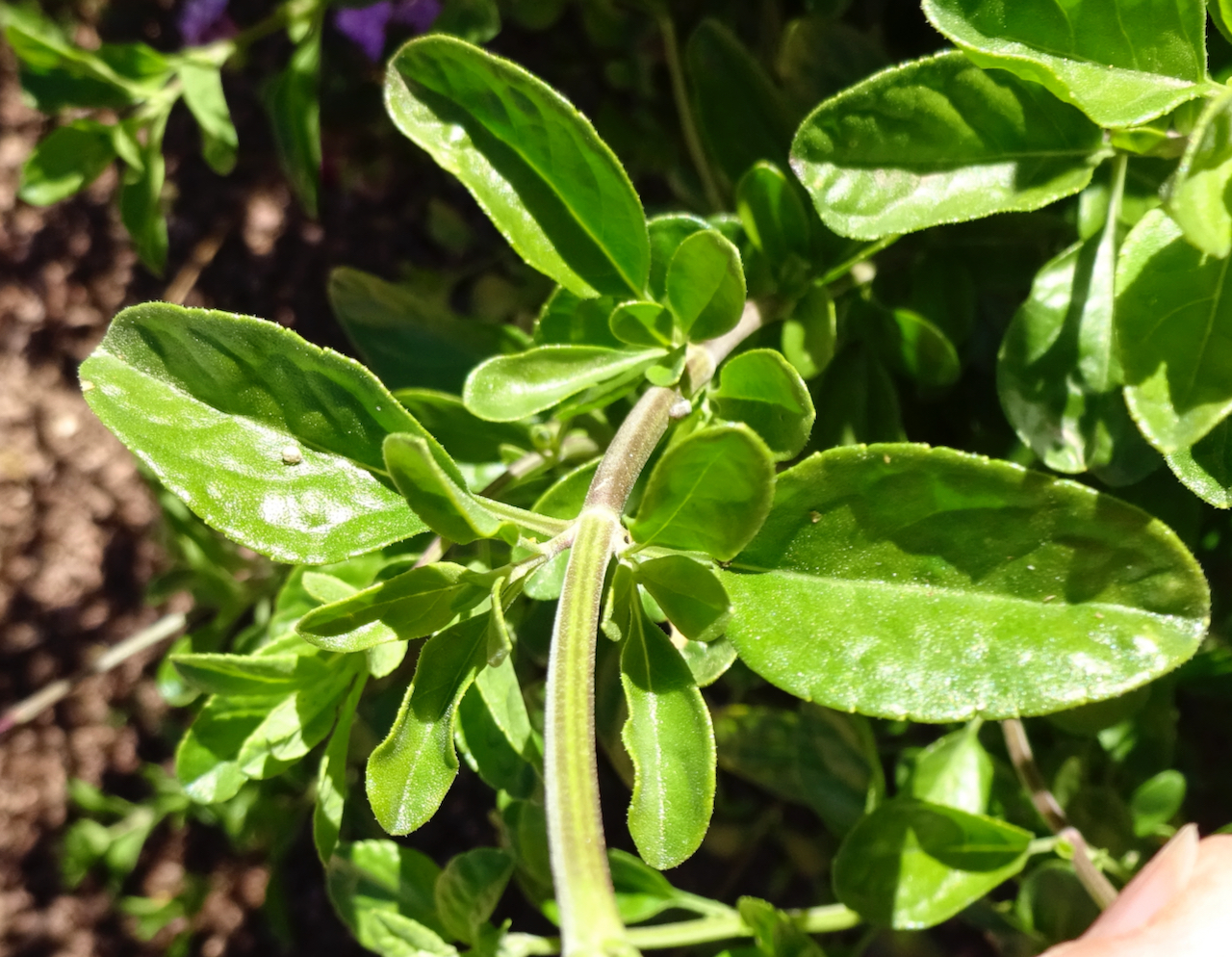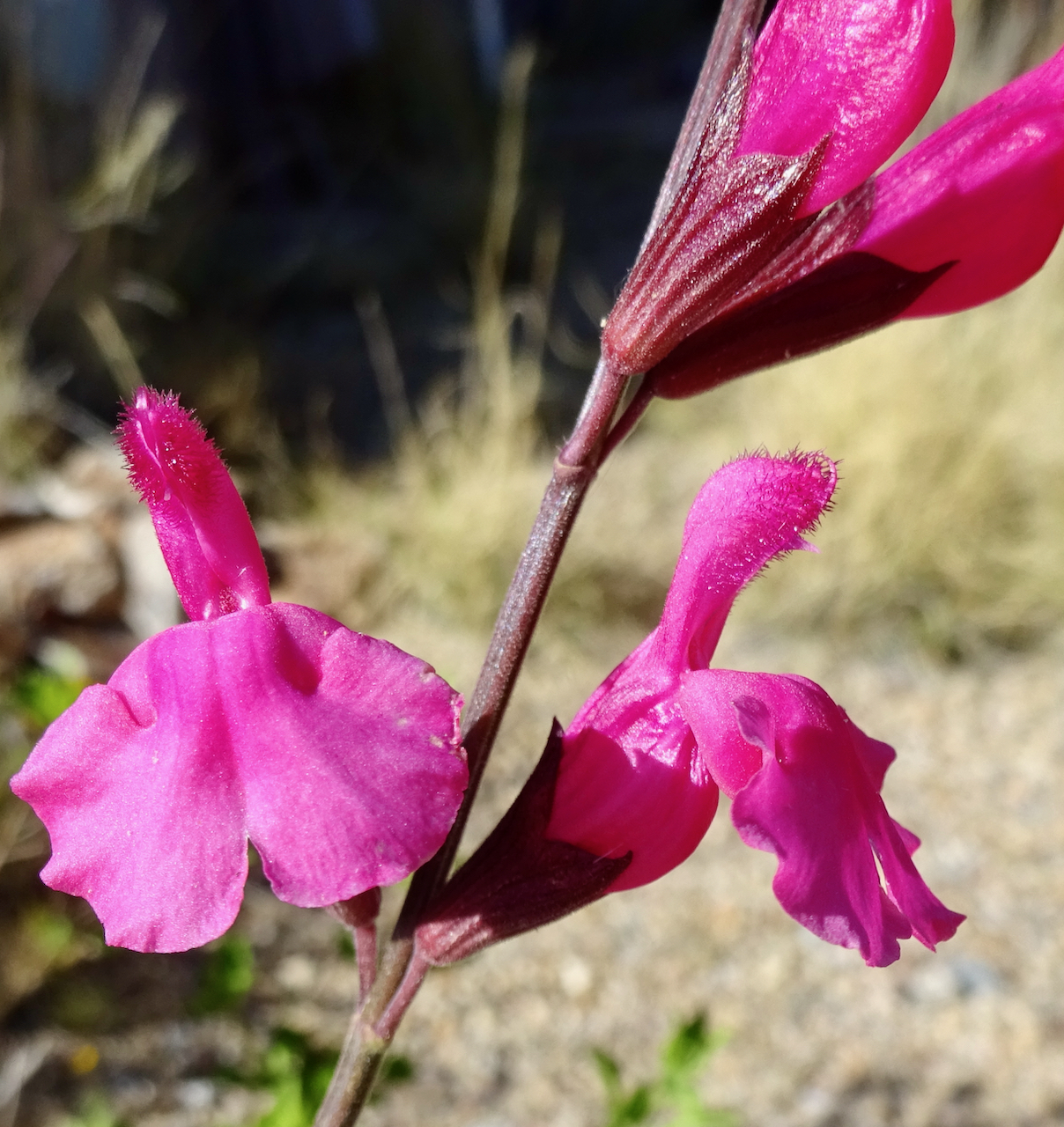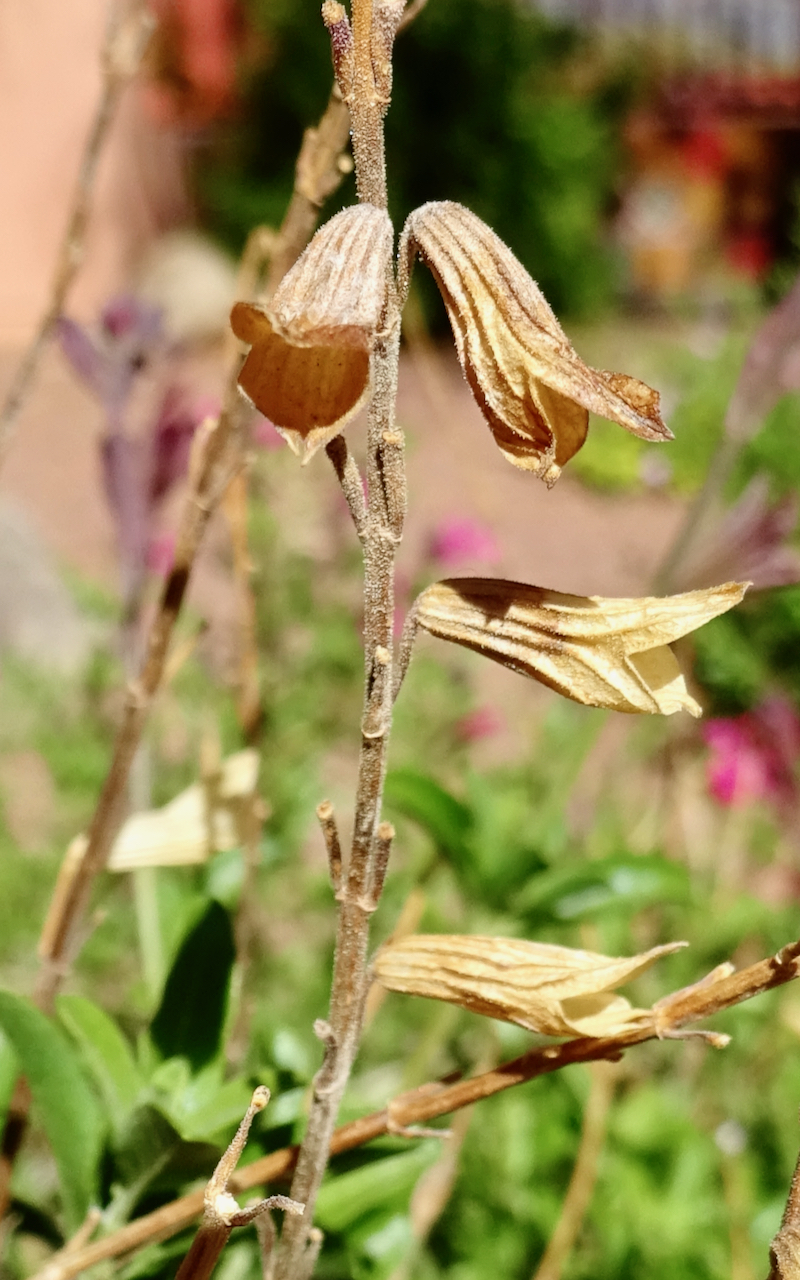Autumn Sage, red Texas sage
Salvia greggii
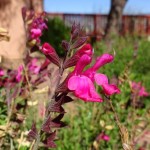
About the Plant
Autumn sage is a native of the Chihuahuan Desert, growing in Texas and adjacent Mexico. It is a popular evergreen landscape shrub that typically grows to 2-3 feet high and wide. Hybridization and selection has given us plants with flower colors that range from red to white and dwarf plants that grow only to about a foot. The flowers appear most abundantly in spring and in autumn and always attract hummingbirds.
Bicolor flowers of variety 'Hot Lips'
Grow autumn sage in full sun to very light shade and in well-drained soil. When each flower spike has finished, cut it off just above the pair of leaves below the lowest flower to encourage branching and additional flower production.
Flower spikes not removed will eventually become bare, sticking up above the foliage (see photo below). These bare stalks can be removed one by one, or the whole plant cut back to encourage a more compact form. Most resources agree that this should be done in late winter. However some say prune to a height of 4 inches, other to reduce height by a third. You may need to experiment a bit. Even with care, this plant usually lives only 5-7 years.
Wildlife value: attracts hummingbirds
More Information
Information from Texas Native Shrubs (Texas A&M)
Horticultural information from ASU
In books:
Native Plants for Southwestern Landscapes by Judy Mielke, page 243
Perennials for the Southwest by Mary Irish, page 231
